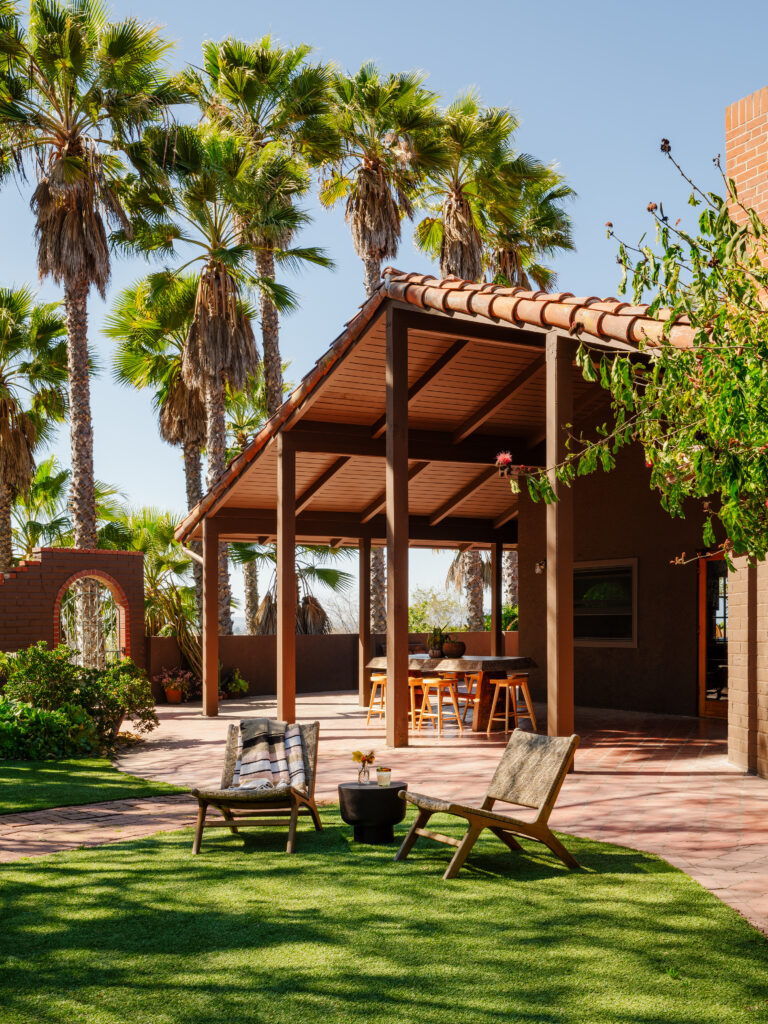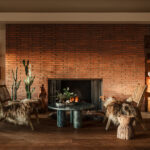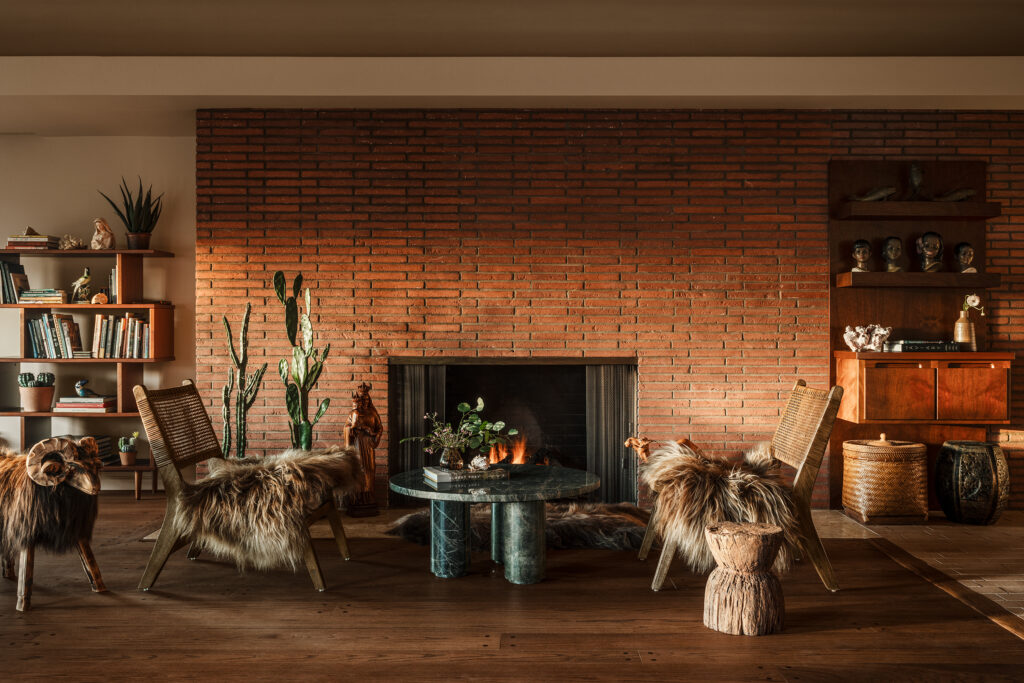History Revisited
Author:Lindsey ShookWith a strong passion for architectural intention, Laurel Harrop stewards a historic Southern California property into the future

Located just seven miles inland from San Diego, Vista, California is known as ‘America’s Climatic Wonderland’ due to its near perfect weather. But what makes this town so unique is the plethora of architecturally significant properties that have been preserved over the years including this 4,100-square-foot California ranch home, originally crafted in 1951 by renowned San Diego architect, Frank L. Hope, that owner Laurel Harrop recently transformed. “We were fortunate to be left the original house plans by Frank L. Hope,” Harrop remarks. “With these as a guide, the design decisions honored the architectural integrity and spirit of the original home.”
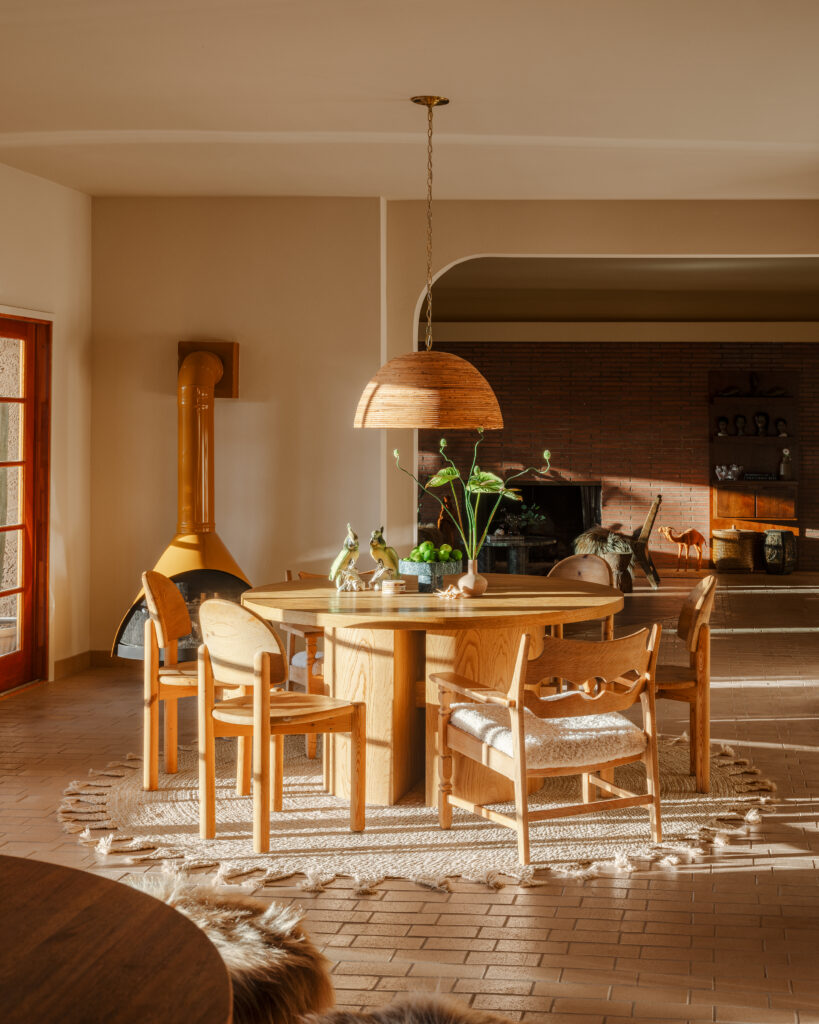
Photos by Lance Gerber Studio.
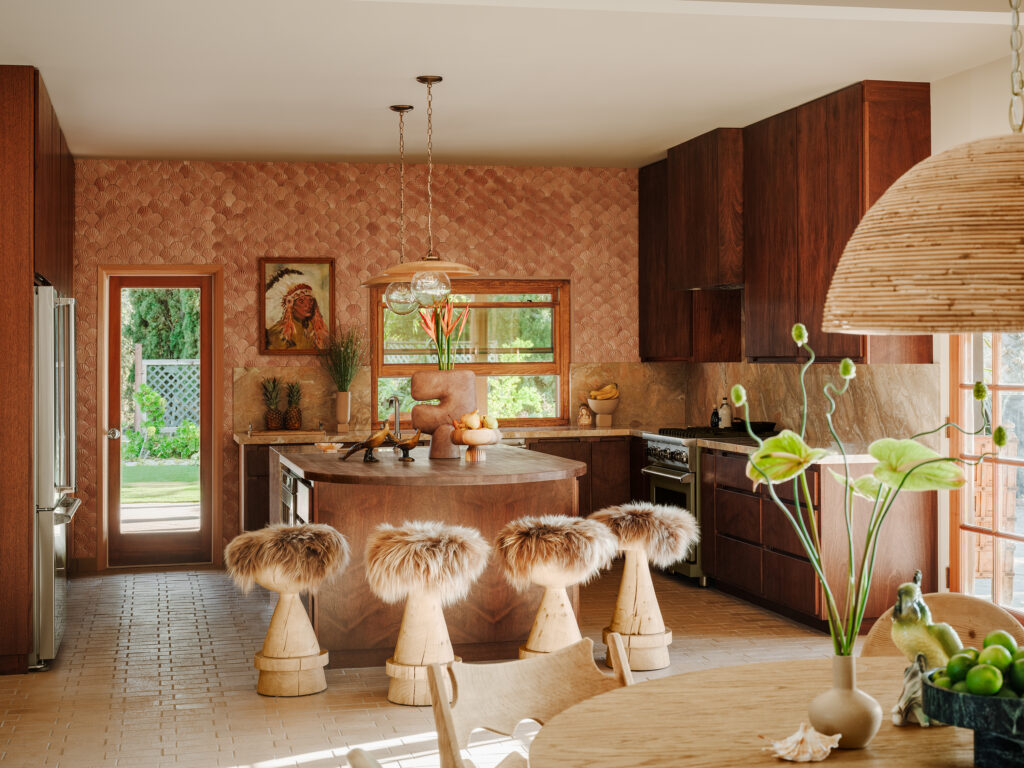
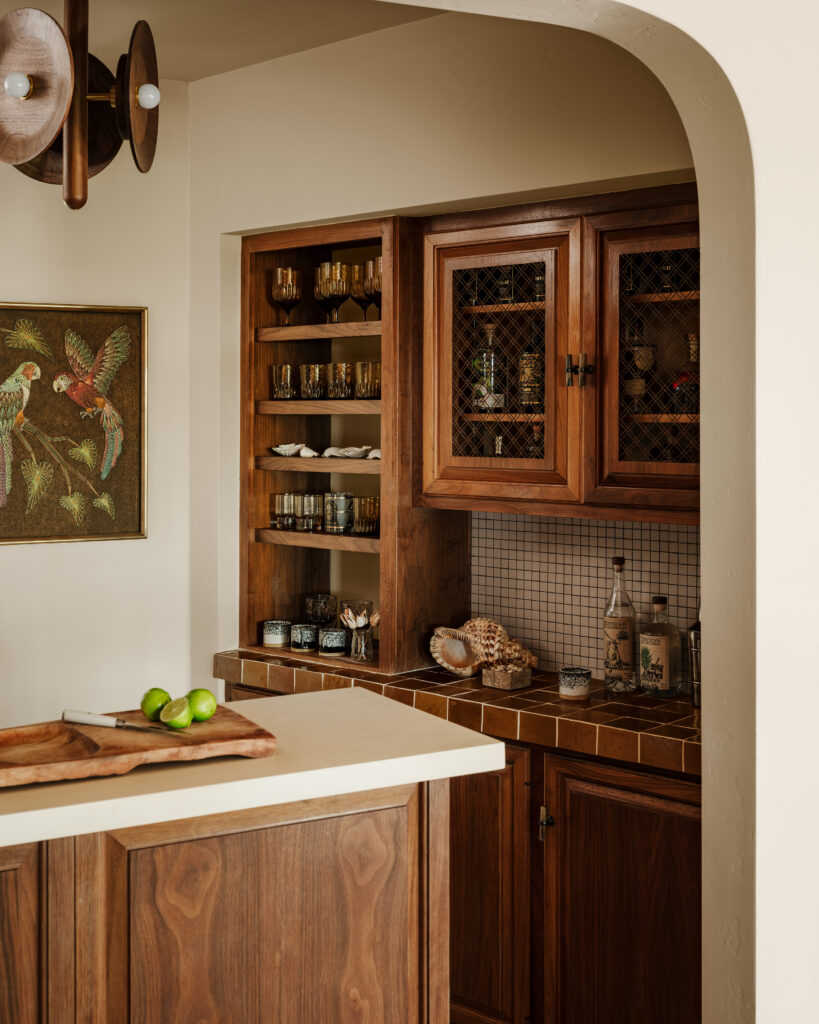
Nestled on a 3.25 acre lot, the understated oasis is concealed amongst a grove of palm trees, palms, cacti and agave plants. “We were living in a very modern house near the beach in Oceanside and I was longing to find a larger space for my kids to be able to explore and play as I did growing up in Wisconsin,” she recalls. “Though the house needed a large renovation, many original mid-century features remained in-tact and the essence of what once was remained. It is a sprawling, idyllic California ranch and reminded me of the California home in the Parent Trap (from 1961).”
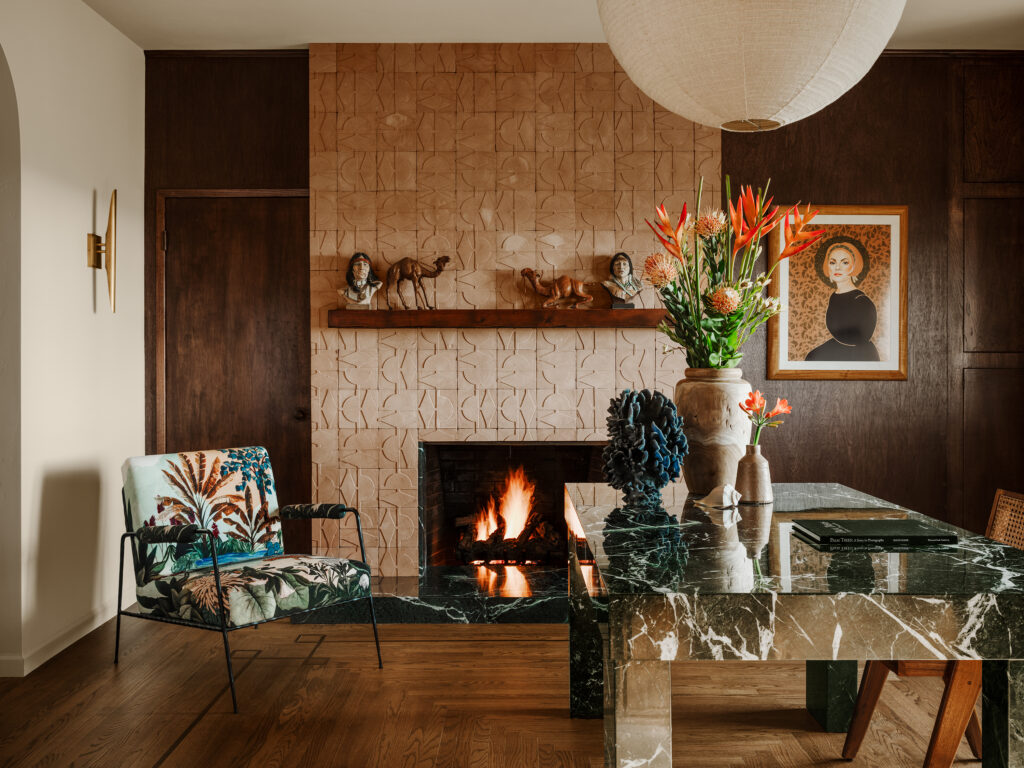
Photos by Lance Gerber Studio.
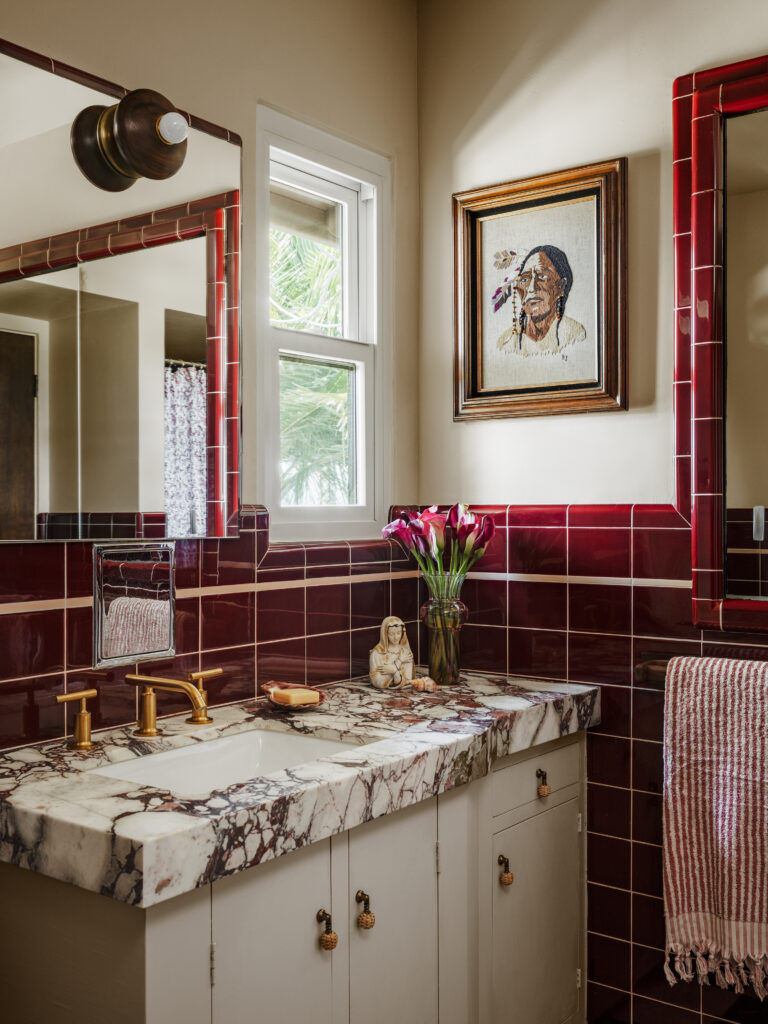
As owner of the non-alcoholic brand called Busty Lush, Harrop is experienced with developing design-forward concepts that honor artistic icons. The overall goal was to keep as much of the original architectural detail in tact while updating functionality, finishes and furnishings. During the extensive renovation, Harrop uncovered evidence of the home’s storied past including a monumental seventy-five-year-old map, pasted to the wall behind a built-in desk. The historic preservation began with the restoration of original oak floors with inlay and pegs that were concealed under layers of cheap flooring, followed by sandblasting concrete blocks that were formerly covered by stucco, that showcase Frank Hope’s original intent for exterior walls. “The plans gave insight into some details that had been suppressed,” she recalls. “The previous owners added several Spanish hacienda style touches that confused the home’s style on various patios, and we removed some arched stucco walls, trellis and Mexican painted tile built in BBQs.”
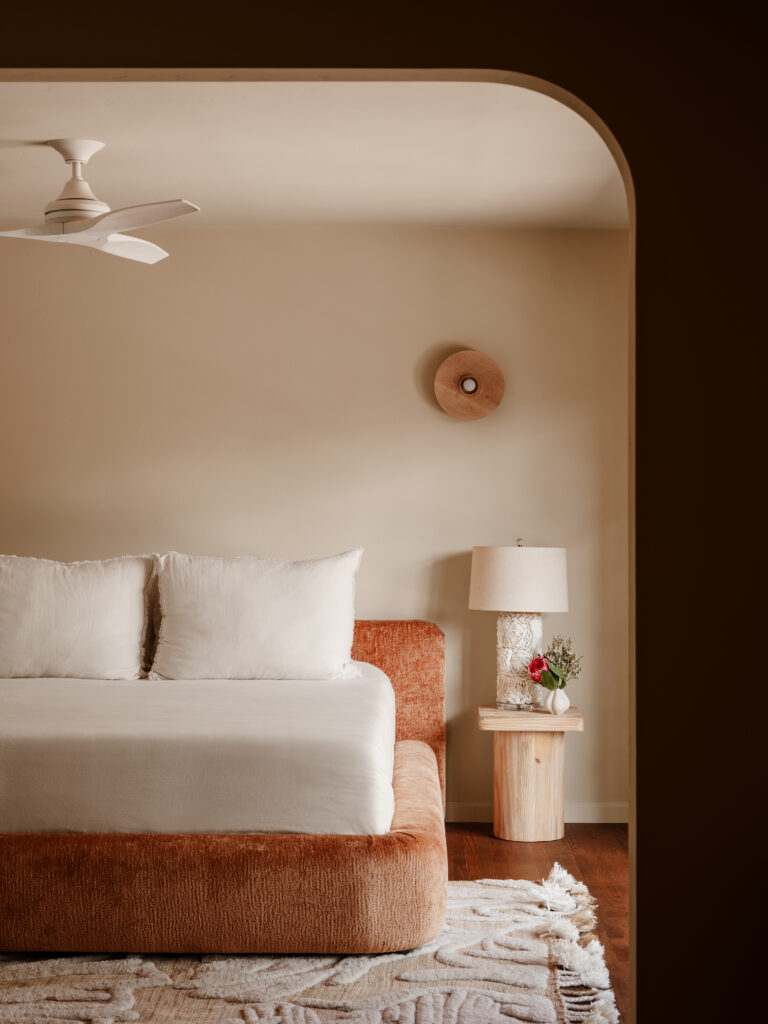
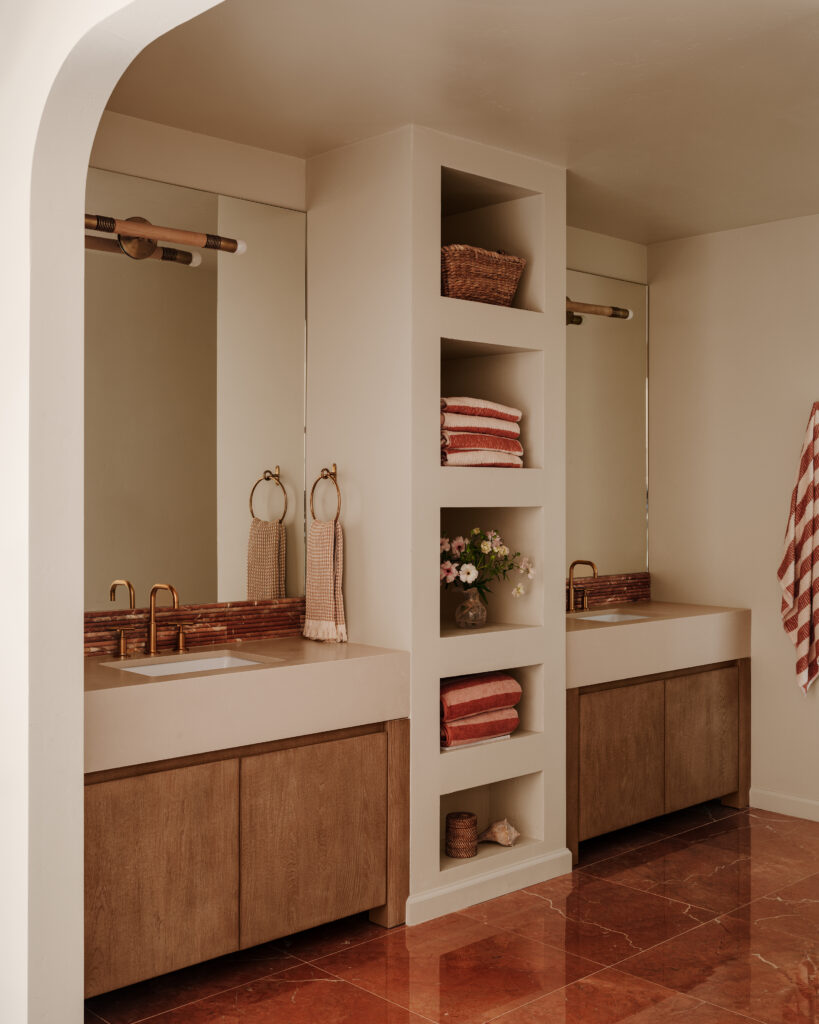
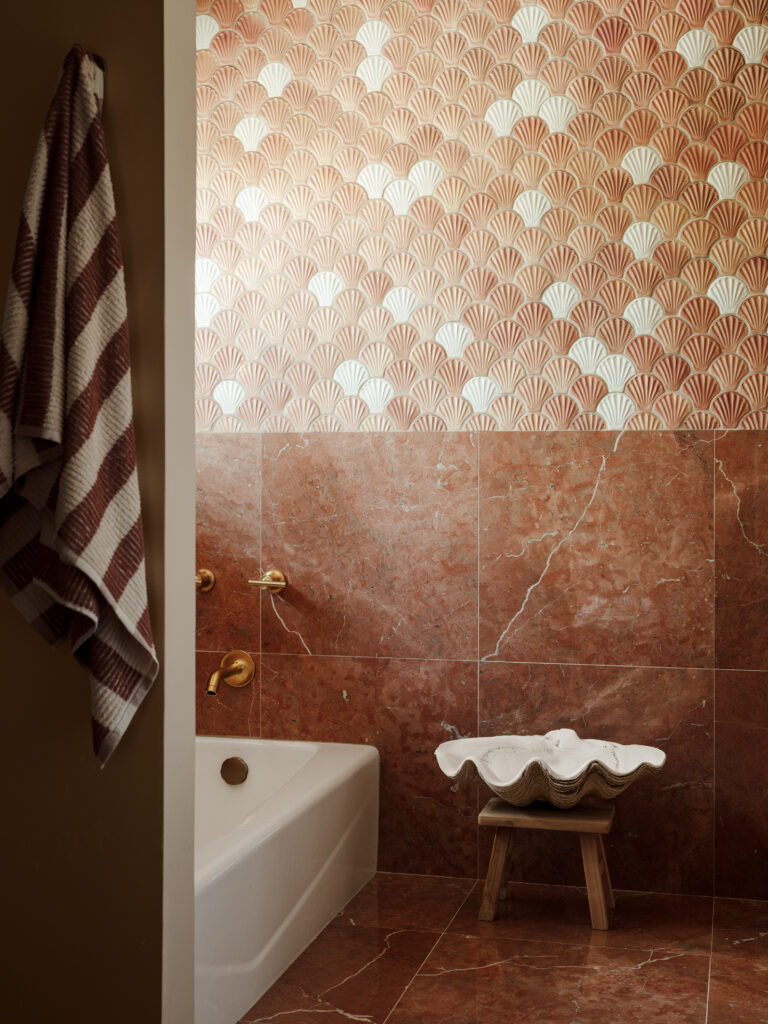
Photos by Lance Gerber Studio.
Harrop honed in on a warm color palette throughout by mixing terracotta, mahogany, oak, brick and verdant marbles. “I wanted the ranch to have a strong, but harmonious palette that blended into the surrounding gardens and complemented the original stacked stone façade surrounding the entry,” Harrop notes. “A few special design touches include the custom handmade shell tiles, the sculptural, unglazed Fornace Brioni terracotta fireplace covering in the study, and a desk fabricated from stunning green marble slabs to correspond with the fireplace hearth. This is my personal office and my favorite room in the house.”
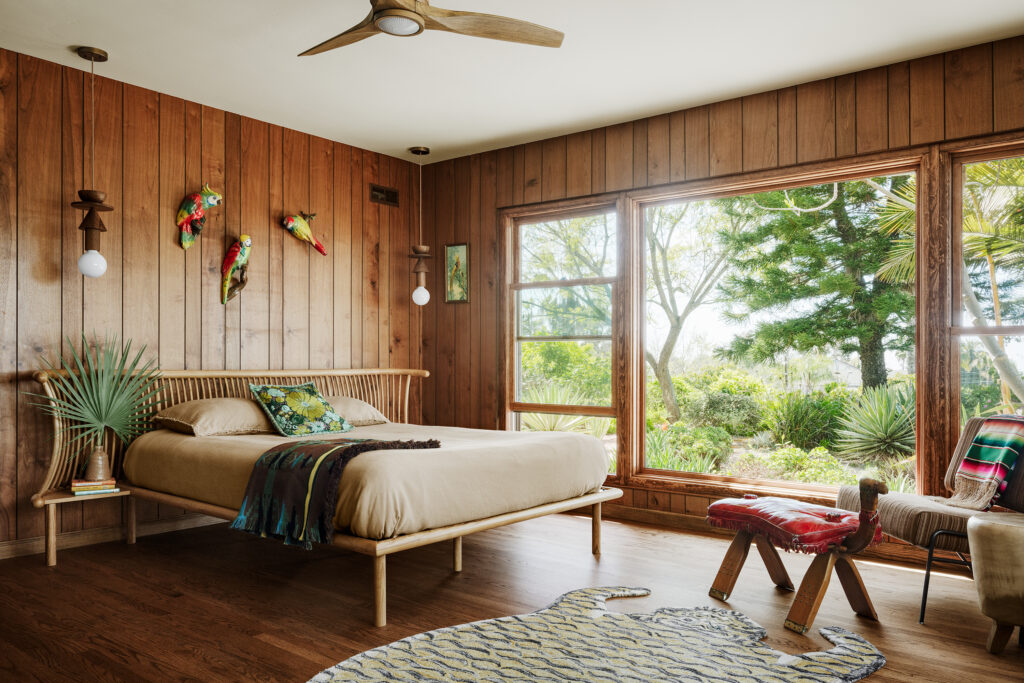
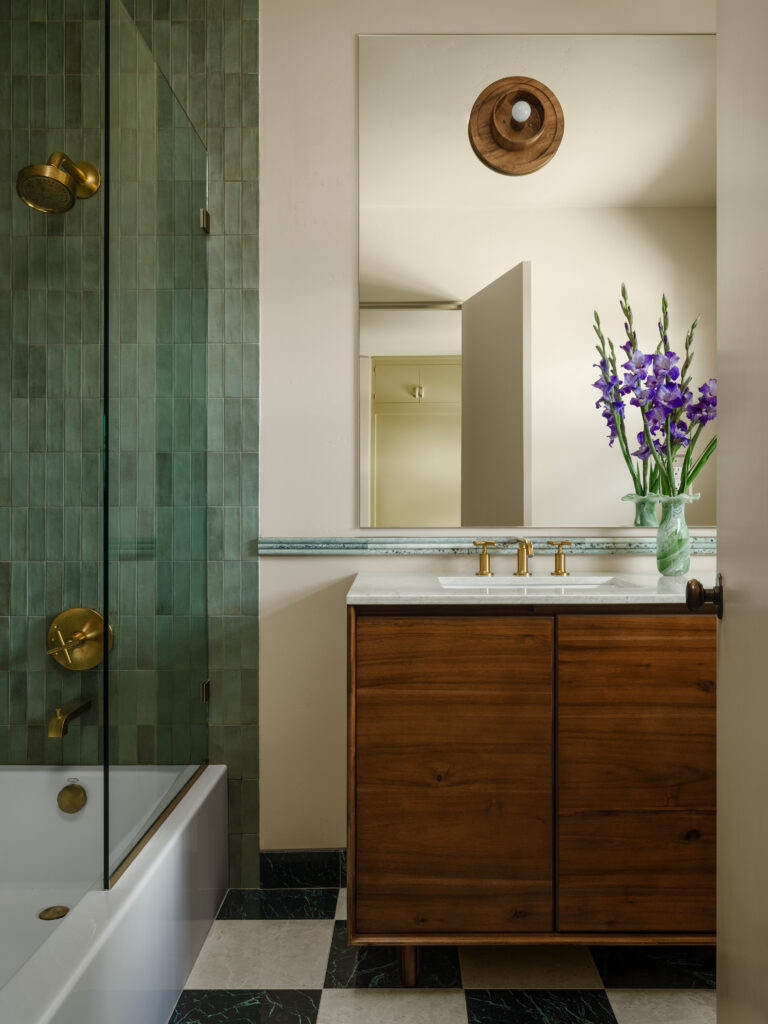
“One of the most wonderful features about this home are the large floor to ceiling picture windows in the living room (as well as the wood paneled guest room),” she remarks. “When I first walked into the home, these wrap around windows showcased the outdoor botanical gardens and the 180-degree, west-facing views of the mountains and distant landscape from the hilltop. The afternoon light in this room is incredible as are the sunsets.”
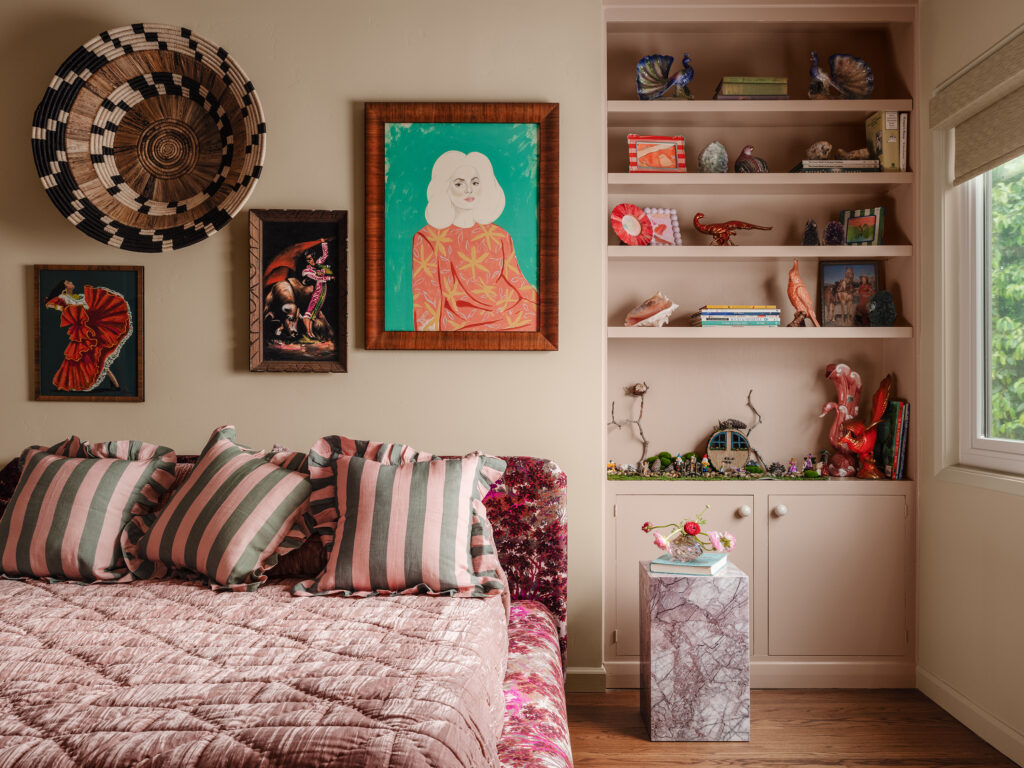
Photos by Lance Gerber Studio.
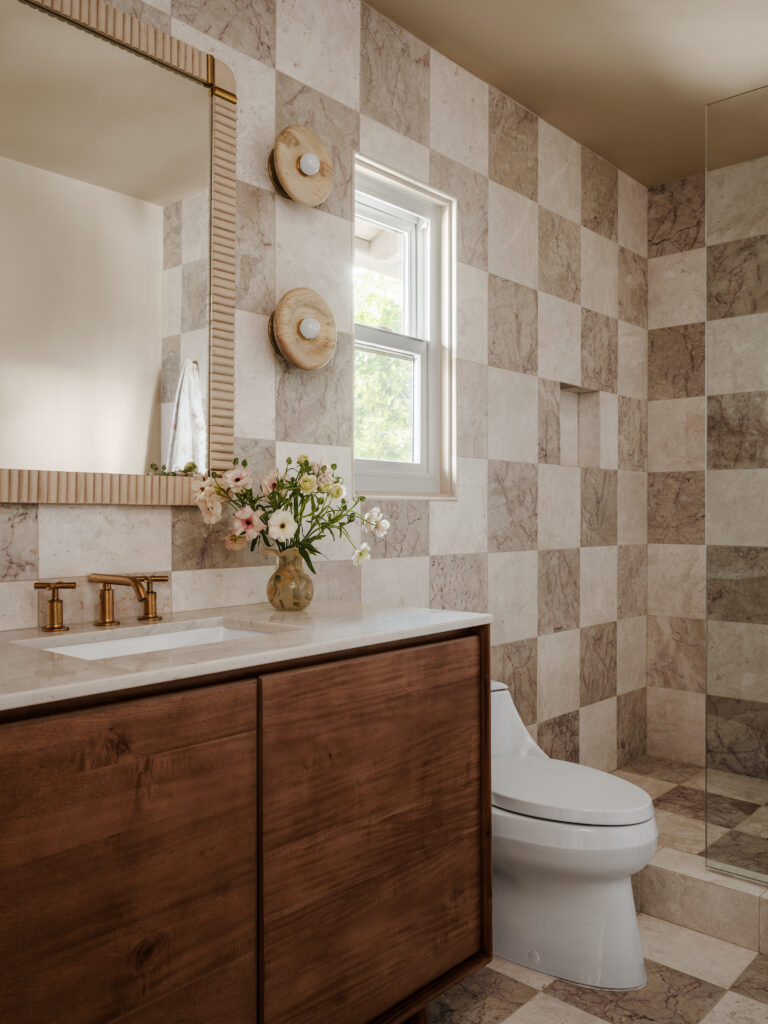
Photos by Lance Gerber Studio.
Harrop’s passion for preservation and design are evident both inside and out. From the custom, modern additions to the celebration of the the original architectural details, the finished result exemplifies that homes of the past can be ushered into the future with thoughtful design. “It is truly such a magical place—both the home and the grounds are a dream oasis,” Harrop proclaims. “We flow through the main living spaces so naturally and can see and the palms and gardens spaces from every room. It is a time capsule reimagined for the modern age.”
